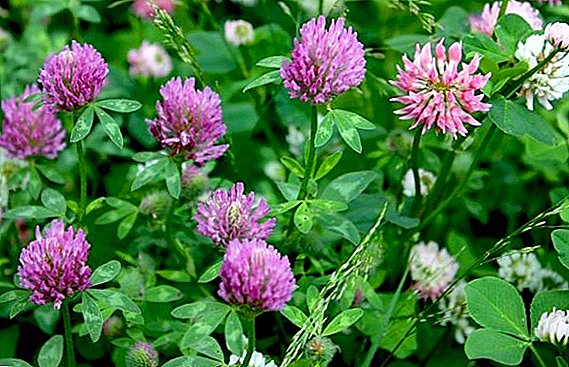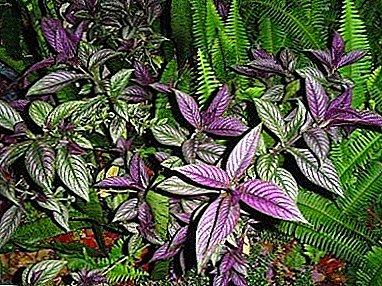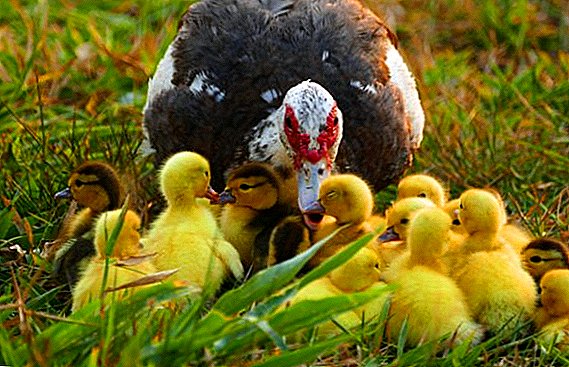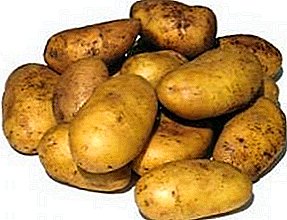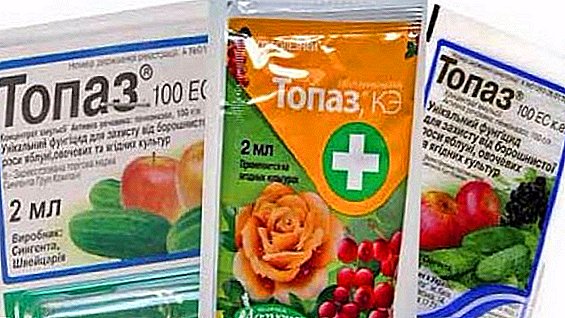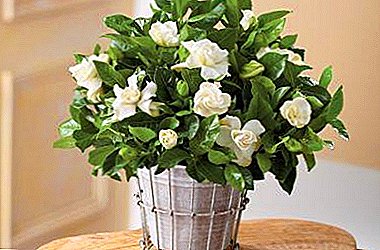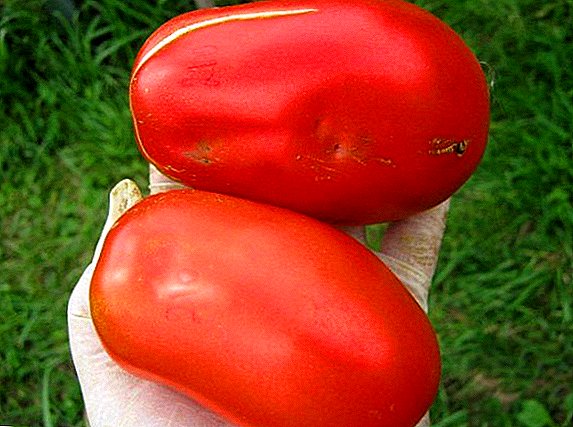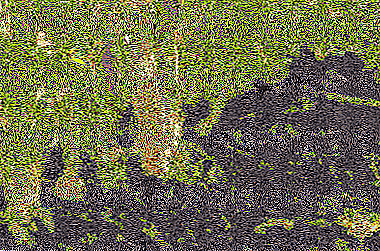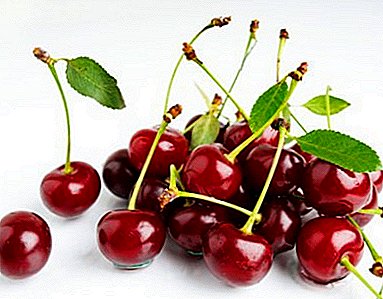
This variety is appreciated for the undoubted taste and comparative unpretentiousness.
It is frost-resistant and wintering well, does not require very careful care.
Bright red berries of Volochaevka are paid tribute to lovers of dessert cherries. Taste is refined, sweet-sour, not tart.
Further in the article description of the variety of cherries Volochaevka and photos in which you will see what this cherry looks like.
Breeding history and breeding region
 The variety is registered in the "fruit stone" section of the state register and has been approved for use in Russia since 1997.
The variety is registered in the "fruit stone" section of the state register and has been approved for use in Russia since 1997.
Distributed in the central regionFor example, in the Moscow region.
It was developed at the Selection Institute for Horticulture and Nursery (FSBIS WSTISP), the oldest and deserved institution that celebrated its eightieth anniversary in August 2015.
To obtain it Evstratov A.I. The cherries Vladimirskaya and Lyubskaya were crossed.
Anatoly Ivanovich has great merits in creating frost-resistant samples, uses both traditional and new methods in breeding activities. His hand belongs to a famous variety of memory Enikeeva.
Appearance of cherry Volochaevka
Consider separately the vernal view of the tree and fruit.
Tree
The berries ripen on the trunks with a rounded crown and a rather dense foliar cover, leaves of dark green color and medium size. The height of the tree is about 3 meters. Novella has the same tree height.
Fruit
 Oval-shaped berries, relatively large, weighing about 4.5 g., and the bone is medium in size and easily separated. The same beacon can boast the same fruits.
Oval-shaped berries, relatively large, weighing about 4.5 g., and the bone is medium in size and easily separated. The same beacon can boast the same fruits.
It is convenient when processing, but the berries are also tasty fresh, differ in dessert taste with a slight sourness.
Juice of thick red color indicates that the variety belongs to the group of moreli or griotov. Vladimirskaya and Griot Moscow.
Characteristics of a variety
Cherry Volochaevka winter hardybut its frost resistance has limits: at a temperature below -30, the kidneys are affected and this has a bad effect on the yield. Winter-hardiness also possesses Shokoladnitsa, Chernokorka, Shubinka, Generous.
It starts to bear fruit in the 4th year and brings about 12 kg.that is regarded as high yield. Fruiting annually at the end of July. Excellent yield demonstrate and Malinovka, Black large, Hope.
This suggests that late varietyand earlier ones, for example Annushka, ripen in June or early July. Among other advantages - good resistance to moniliasis and coccomycosis, although it is considered average.
Self-fruited varietytherefore, it does not require cross-pollination and the yield does not depend on pollinating insects, the neighborhood of other trees and the vagaries of the weather.
The same age, the Lighthouse and the Youth also possess self-fertility.
A photo








Planting and care
The unpretentiousness of Volochaevka does not exclude the need to follow the most simple but important rules.
Landing
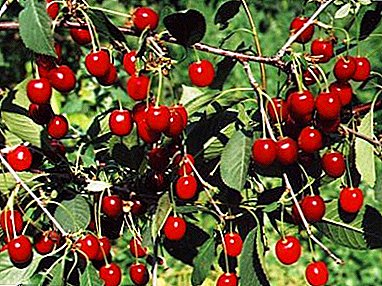 Planted in Aprilbefore the buds bloom at a distance of 3 meters in pits with a diameter of 60 cm and the same depth. The goal is to locate the root system in a straightened position.
Planted in Aprilbefore the buds bloom at a distance of 3 meters in pits with a diameter of 60 cm and the same depth. The goal is to locate the root system in a straightened position.- Initially, it is desirable to inspect the roots: cut off the damaged ones, and if they are too dry, hold them in water for several hours.
- Humus, potassium chloride, superphosphate, and ashes are added to the ground, and clay sand.
- A peg is hammered into the center to which the seedling is tied. Then the mixture is poured, the surface is leveled and compacted so that the radical neck protrudes slightly from the soil. The roller is made so that the hole is formed.
- Watering is done with 2-3 buckets.
- The landing hole is mulched - it protects from moisture evaporation and from cracking (with straw, compost).
Care
It includes various activities:
- Protection from frost serve as secretions and smoke. The space under the crown is covered with snow, and then with a layer of mulch. It keeps the soil frozen longer, the flowering will be delayed and the cooling will go without loss.
When you smoke, sawdust or peat is ignited so as to form dense smoke, which allows you to protect Volochaevka from the cold. This is a popular way, the disadvantages of which include non-environmental friendliness and the complexity of taking wind direction into account.
- Fertilizer.
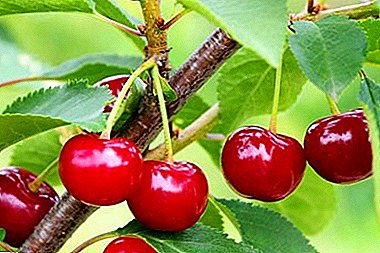 For several years, what was added at the beginning is enough. After that they give additional feeding, but in moderation: overfed trees suffer the winter worse.
For several years, what was added at the beginning is enough. After that they give additional feeding, but in moderation: overfed trees suffer the winter worse.Compost and manure and mineral fertilizers are used. The specific strategy may vary and depends on the condition of the trees and other factors, and usually looks like that:
- urea contribute to the second year;
- in the spring, in the third year they make diluted nitrogen fertilizers for each tree;
- urea is introduced in the 4th year in spring; in the summer or autumn - double superphosphate and potassium sulfate; in the autumn organic matter is introduced;
- Ammophosh is applied in the fifth and sixth year;
- 7th - urea in the spring in the near-stem circle for digging, and in the fall - superphosphate and potassium sulfate, organics are added to the annular grooves;
Subsequently in a year - mineral substances and once in four years organic in the amount specified for the seventh year.
We must not forget about liming every five years. For this purpose, limestone, chalk and dolomite are used.
- Loosening the land spend during the entire growing season at least three times. Well-loosened and weed-free land helps growth and protects against parasites.
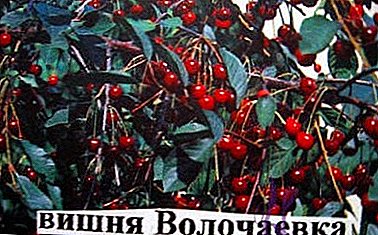 Pruning they do it every year, freeing the trunk from unnecessary severity: dried branches, as well as those that interfere with proper growth. This is done in spring, but sometimes at the end of the year, for example, to remove broken branches.
Pruning they do it every year, freeing the trunk from unnecessary severity: dried branches, as well as those that interfere with proper growth. This is done in spring, but sometimes at the end of the year, for example, to remove broken branches.
- Watering. Cherry Volochaevka is not very demanding for watering, however, it is produced periodically: after flowering; during the pouring of the fruit; at the beginning of autumn. The volume used is approximately fifty liters. Additional need if used dry mineral fertilizers.
Diseases and pests
Kokomikoz appears on the upper part of the leaf with brown spots and dots and bloom on the underside. They are deformed and showered, the fruits are dented with dents. After harvesting, you have to destroy the leaves.
In case of severe infection, treated with urea and Bordeaux liquid.
The varieties Zhukovskaya, Podbelskaya and Kharitonovskaya possess good resistance to coccomycosis resistant.
Monilioz causes shrinkage. The bark is replete with growths, they pour on the berries, which then dry up. Infected parts immediately cut off and destroyed.
In the fight help: ferrous sulfate, Bordeaux liquid, "Topsin-M" and an aqueous solution of perchloric copper oxide.
Among other ailments can be called perforated spotting, anthracnose, gum treatment.
Perforated spotting, as well as moniliosis, attacks the leaves and fruits, causing them to dry. The fight against this scourge is conducted by the same means.
 Anthracnose mainly affects the fruits: they speckled specks, bumps and there is a pink patina, they dry up.
Anthracnose mainly affects the fruits: they speckled specks, bumps and there is a pink patina, they dry up.
Helps spray three times with Poliram.
Comedication diagnosed in the presence of discharge of colorless liquid - gum.
Copper sulfate and lime are treated for prophylaxis, damages are patched with patralatum.
For Volochaevka are dangerous pests, including:
- Aphid, sucking juice. Inta-Vir and Spark are used.
- Weevil. Eats buds, flowers and ovaries. Loosening, spraying of kinmiks and carbaphos helps.
- Larvae mucous sawfly devour the leaves. Inta-Vir is fighting with him.
- Moth eats buds, buds and leaves. Decis and aktar will help against it.
Volochaivka is ideal for the middle part of Russia, and, if you follow simple rules of care, you will enjoy dessert crops for years.
Watch the video about the cherry variety Volochaevka.


 Planted in Aprilbefore the buds bloom at a distance of 3 meters in pits with a diameter of 60 cm and the same depth. The goal is to locate the root system in a straightened position.
Planted in Aprilbefore the buds bloom at a distance of 3 meters in pits with a diameter of 60 cm and the same depth. The goal is to locate the root system in a straightened position. For several years, what was added at the beginning is enough. After that they give additional feeding, but in moderation: overfed trees suffer the winter worse.
For several years, what was added at the beginning is enough. After that they give additional feeding, but in moderation: overfed trees suffer the winter worse. Pruning they do it every year, freeing the trunk from unnecessary severity: dried branches, as well as those that interfere with proper growth. This is done in spring, but sometimes at the end of the year, for example, to remove broken branches.
Pruning they do it every year, freeing the trunk from unnecessary severity: dried branches, as well as those that interfere with proper growth. This is done in spring, but sometimes at the end of the year, for example, to remove broken branches.